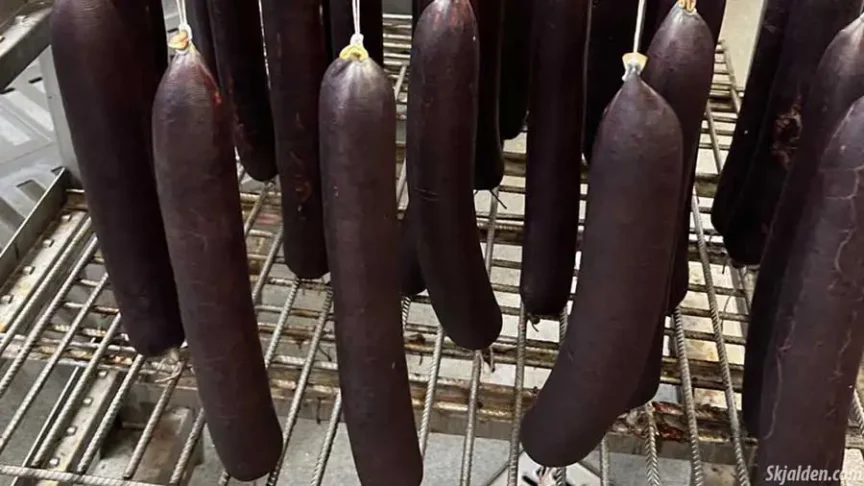Blodpølse is a traditional blood sausage from Denmark and Norway, known for its unique blend of flavors. Made from pig’s blood, it includes ingredients like barley or rye flour, milk-cooked barley grains, rye flour, sugar, ginger, cloves, allspice, thyme, raisins, and diced fatback, creating a rich and hearty meal enjoyed in Scandinavia.
The combination of spices like cloves, cinnamon, and allspice adds a distinct taste to Blodpølse. When paired with boiled potatoes and lingonberry jam, it forms a satisfying dish.
This sausage is a staple in the Scandinavian diet, offering a taste that’s both complex and comforting. Its preparation and ingredients reflect a tradition of making the most out of available resources, presenting a sustainable food choice.
As global interest in diverse foods grows, Blodpølse is becoming more widely available, appealing to those eager to try Scandinavian dishes. While it offers a glimpse into Danish and Norwegian cuisine, its appeal lies in its flavors and the culinary experience it provides.
Blodpølse vs Blodkorv: A Brief Comparison
Blodpølse and Blodkorv are both key to Scandinavian cuisine but differ in flavor and texture.
Origin and Ingredients: Blodpølse, from Denmark and Norway, combines pig’s blood with spices and grains, including barley or rye flour, milk-cooked barley, and a mix of sweet and savory spices. Blodkorv, common in Sweden, also starts with pig’s blood but focuses more on pork meat and savory spices.
Texture and Preparation: Blodpølse tends to be softer and slightly sweeter due to its spice blend. Blodkorv has a coarser texture, influenced by the meat and spices used.
Serving Traditions: Both dishes are usually served with boiled potatoes and lingonberry jam. Blodpølse often appears in more traditional settings, while Blodkorv is versatile, fitting for various meals.
In Denmark, Blodpølse is commonly boiled, sliced, and served warm with apples, cinnamon, and syrup, highlighting its versatility and deep-rooted place in culinary tradition.
